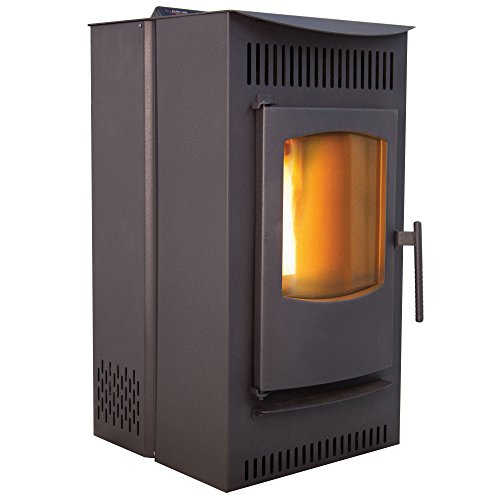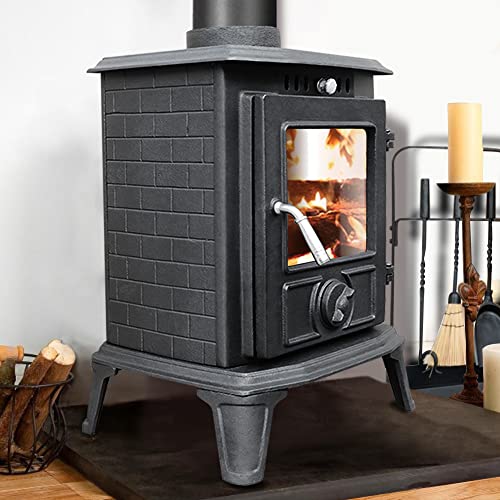What Wood Stove Burning Experts Want You To Know
페이지 정보
작성자 Jonelle Ruff 작성일 23-11-17 13:42 조회 32 댓글 0본문
 EPA-Certified Wood Stoves May Not Meet Your Health and Safety Standards
EPA-Certified Wood Stoves May Not Meet Your Health and Safety StandardsMany communities have offered financial incentives to replace old wood stoves with EPA-certified models that produce less polluting. Undark discovered that some of the newer stoves might not meet EPA standards.
In a time of high energy costs, cities are seeking ways to cut down on burning wood, particularly in areas with poor air quality. Here are ten things you can do to improve the quality of your indoor air and gain more heat from each log.
Efficiency
Wood stoves are among the most energy-efficient ways to heat your home. Modern EPA certified wood woodburning stoves (just click the following website) burn up logs quickly and produce less creosote than older models. This lets you use more energy in your fire and reduce your heating expenses by up to 30 percent. If you only use seasoned hardwood, the efficiency of wood stoves increases throughout the life of the stove.
Older wood stoves have an efficiency of 50 percent or lower. This means that half of the energy potential in the fire is lost when smoke and carbon monoxide are released into the air. Modern stoves can boast an efficiency of up to 85% or more. This is comparable to oil and gas furnaces.
Wood stoves can be improved by controlling the airflow as well as the multi fuel stove and combustion processes. Wood stoves that regulate the airflow can slow down the speed at which fire is moving through the wood, and permit the gas that is produced to stay hot and completely combust.
Modern wood stoves can recycle the byproducts of incomplete combustion to create a new flame that is more efficient in burning. This process, known as reburn, can boost the efficiency of wood stoves by up to 10%.
Wood is also carbon-neutral, which is another advantage. Trees absorb carbon dioxide from the atmosphere while growing and release oxygen in return when they are burned. Wood is also an environmentally sustainable resource, particularly when it is obtained from local woodlands that are managed in a manner that encourages the growth of healthy trees.
Cleanliness
With 8.8 million households that use wood stoves in the United States, cleaning and maintenance are a crucial part of keeping the home warm. A filthy stove or flue pipe can cause carbon monoxide and fire hazards. Clean chimneys, stoves and flue pipes are more efficient.
The removal of ashes is the most common task to do when cleaning your wood stove. This should be done on a day that is cool, when the stove is no longer hot and you must wear protective gloves when handling the ashes. Select a metal container that is large enough to hold all of the ashes, then take them outside away from anything that could cause a fire. You can also add the ashes to your compost to make an organic addition to your garden.
While the ashes have been removed from the stove, you can sweep the floor to get rid of dust. It is recommended to leave at least 3 feet of space between your wood stove and any combustible materials like curtains, pillows or toys. This will stop the spread of fire and burning the objects.
As for the inside of your stove, glass doors that are clean allow you to enjoy a view of the dancing flames and will help you determine when it's time to begin a new fire. Make sure you have a glass cleaning solution on hand in order to clean any tarred or smudged areas. Newspapers dipped in water and ash can be used to cleanse the glass if it's extremely filthy. Be careful not to scratch the glass because scratches can weaken the glass and shatter when it is heated.
Creosote accumulation on the inside of your flue is the primary cause of chimney fires. A tiny amount of creosote could cause a fire in the chimney. Clean the flue frequently especially in the event that burning pine or soft woods produce more creosote.
To avoid creosote vapors entering your home, you should only burn dry, seasoned wood that has been split in half or smaller. Also, never burn artificial logs or trash in your wood stove.
Safety
Wood stoves can emit toxic gases such as carbon monoxide and particulates. These toxins enter the home and can have negative health consequences for young people, older adults or those suffering from respiratory issues like asthma or COPD. Over time exposure to wood smoke can cause heart disease and lung damage.
To avoid these risks It is crucial to follow proper wood stove burning procedures. This includes making sure that the stove is functioning properly and that it is able to produce enough heat powered wood stove fan for the space and design. In addition, only dry, well-seasoned woods should be used in the stove. The moisture content of the firewood should not exceed 20%. If the moisture content of the wood is higher the fire will burn faster and produce a smoky fire with more creosote forming on the chimney vent pipe's wall.
Another important safety issue is ensuring that the stove has a good draw by monitoring the amount of air flowing into the firebox and through the chimney. Most modern stoves have various ways to alter the flow of air, and the owner's manual has documented procedures. The highest efficiency in heating can be achieved if the air controls are properly operated.
Additionally, the flue and chimney pipes should be kept free of material that could ignite, such as drapes, papers, trash or rug. The fires that occur in wood stoves are often caused by an insufficient clearance between combustibles wood-burning appliances as well as combustibles.
Be sure to keep children out of wood stoves while the fire is burning or when the ashes are being removed. Children are naturally curious, and may try to touch the hot surfaces of the wood stove or even put their hands into the flame. Install a child-proof fence around the fireplace, or install a fireplace screen. It is also important to regularly check the fireplace and wood stove for signs of wear and tear.
Finally, it is essential to have your stove and chimney professionally inspected once per year for the accumulation of creosote and bird nests, as well as other issues that could affect the safety of your chimney and stove. This will reduce the risk of fires and health hazards, and also reduce the necessity for CO2 or smoke remediation services.
Maintenance
corner wood burning stove stoves are an excellent way to save money on home heating, they do require some additional maintenance. If you don't do the necessary maintenance on your wood stove, it can result in a fire that escapes the flue, a risky chimney fire, or even a house fire. It is also recommended to clean the bio ethanol stove's surfaces and flue. It is also advisable to keep a fire extinguisher handy and test it regularly. Smoke detectors are beneficial throughout the house, but particularly in the room where the stove is.
As a rule it is recommended to clean the chimney and stove once a year. The schedule for cleaning is dependent on the amount that the electric stove heaters is being used, and it might need to be done more frequently in winter. Also, make sure to make sure to use only dry and seasoned wood to burn in the stove. It is advised to avoid using lots of oil or kerosene for beginning the fire, because these fuels burn differently and can produce toxic gases that could be very harmful to your health.
In the course of your regular cleaning it is important to check the gaskets on your doors. They are typically made from a braided material that can become degraded over time. If you find that the gasket is loose and needs to be replaced, Woodburning stoves purchase a new fiberglass seal and some gasket adhesive. The hinges on these doors should be checked as well.
It is important to inspect flues and chimneys to ensure that they are free of obstructions and creosote. During the inspection, check for cracks or other signs of damage to the chimney lining. Stovepipes should be inspected as well, and any gaps or dents need to be filled.
It is crucial to clean the glass door of your wood stove. This can be accomplished easily by using a mixture of water and ammonia. A sponge or rag should be saturated with the solution, then wiped over the surface of the glass until it is clean. For tougher stains, you can leave the solution on for a few minutes before wiping the glass again.

- 이전글 Unveiling the Secret to Sparkling Windows in St. Joseph, Missouri!
- 다음글 Dorothy From The Wizard Of Oz Costume Guide
댓글목록 0
등록된 댓글이 없습니다.